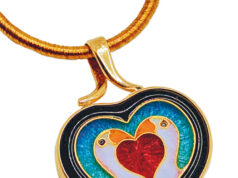Why Sustainable Fashion Is Growing and Why It Matters Sustainable fashion is a growing movement in the fashion industry that aims to reduce the negative environmental and social impacts of clothing production and consumption. It encompasses a range of practices, including using eco-friendly materials, reducing waste and emissions, and promoting fair labor practices. In recent years, sustainable fashion has gained increasing attention and popularity from consumers, designers, and brands alike. In this article, we will explore the reasons behind the growth of sustainable fashion and why it matters.
The Environmental Impact of Fashion
The fashion industry is known to have https://playboyclothingshop.net/ a significant environmental impact. It is the second-largest polluter in the world after the oil industry, responsible for around 10% of global carbon emissions. The production of clothing involves the use of non-renewable resources, such as oil and water, and generates a significant amount of waste and pollution. The dyeing and finishing of textiles, for example, can release toxic chemicals into waterways, harming both the environment and local communities. Additionally, the production of synthetic fibers, such as polyester, releases microplastics into the ocean, which can have negative effects on marine life.
The Social Impact of Fashion
In addition to its environmental impact, the fashion industry also has a social impact. Many clothing manufacturers operate in countries with lower labor standards and wages, leading to poor working conditions and exploitation of workers. Sweatshops, child labor, and unsafe working conditions are still prevalent in many parts of the industry. These practices can harm workers’ health and safety, as well as their basic human rights.
The Growth of Sustainable Fashion
Despite the negative impact of the fashion industry, there has been a growing interest in sustainable fashion in recent years. Consumers are becoming more aware of the environmental and social impact of their clothing choices and are looking for more sustainable alternatives. This shift in consumer behavior has led to an increase in demand for sustainable fashion, which in turn has encouraged designers and brands to incorporate sustainable practices into their production processes.
Sustainable fashion also advocates for fair labor practices, including paying workers fair wages and providing safe and healthy working conditions. Moreover, sustainable fashion prioritizes diversity, equity, and inclusion, seeking to create a more inclusive and representative fashion industry.
Consumer Demand
Consumer demand for sustainable fashion has been growing rapidly in recent years. According to a 2020 survey by thredUP, a secondhand clothing platform, 80% of respondents said they were more likely to buy from a brand that is environmentally and socially responsible. Furthermore, 44% of respondents said they planned to buy more secondhand or vintage clothing in the coming year. This suggests that consumers are not only interested in sustainable fashion but are also actively seeking out more environmentally friendly and socially responsible options.
The Rise of Ethical and Sustainable Brands
The growing demand for sustainable fashion has led to the rise of ethical and sustainable fashion brands. These brands prioritize sustainable practices throughout their production processes, from sourcing materials to manufacturing and packaging. They also prioritize fair labor practices and ensure that workers are paid a fair wage and work in safe conditions. Some examples of sustainable fashion brands include Patagonia, Eileen Fisher, and Everlane.
The Emergence of Secondhand Fashion
Another trend in sustainable fashion is the emergence of secondhand fashion. Secondhand clothing is an environmentally friendly and affordable alternative to buying new clothes. It also helps reduce the amount of clothing that ends up in landfills. Online secondhand clothing platforms, such as thredUP and The RealReal, have made it easier for consumers to buy and sell secondhand clothing.
Environmental Impact
Sustainable fashion has the potential to significantly reduce the environmental impact of the fashion industry. By using eco-friendly materials, reducing waste and emissions, and promoting circularity, sustainable fashion can help conserve natural resources, reduce greenhouse gas emissions, and minimize pollution and waste.
Conclusion
In conclusion, sustainable fashion is growing because of its environmental and social benefits, as well as the increasing awareness and demand from consumers. Sustainable fashion matters because it addresses the issues inherent in the traditional fashion industry and provides a more responsible and sustainable alternative. By supporting sustainable fashion, we can contribute to creating a more just and sustainable world. Sustainable fashion also has many benefits for consumers, including higher quality and durability, greater comfort and uniqueness, and a sense of pride and fulfillment. Therefore, it is








